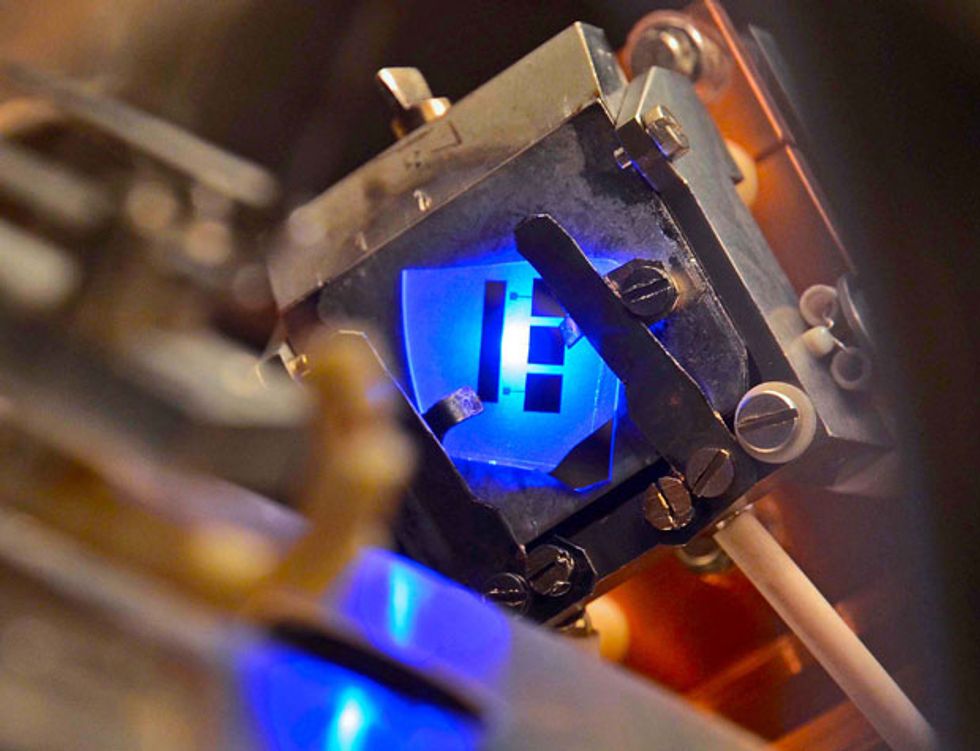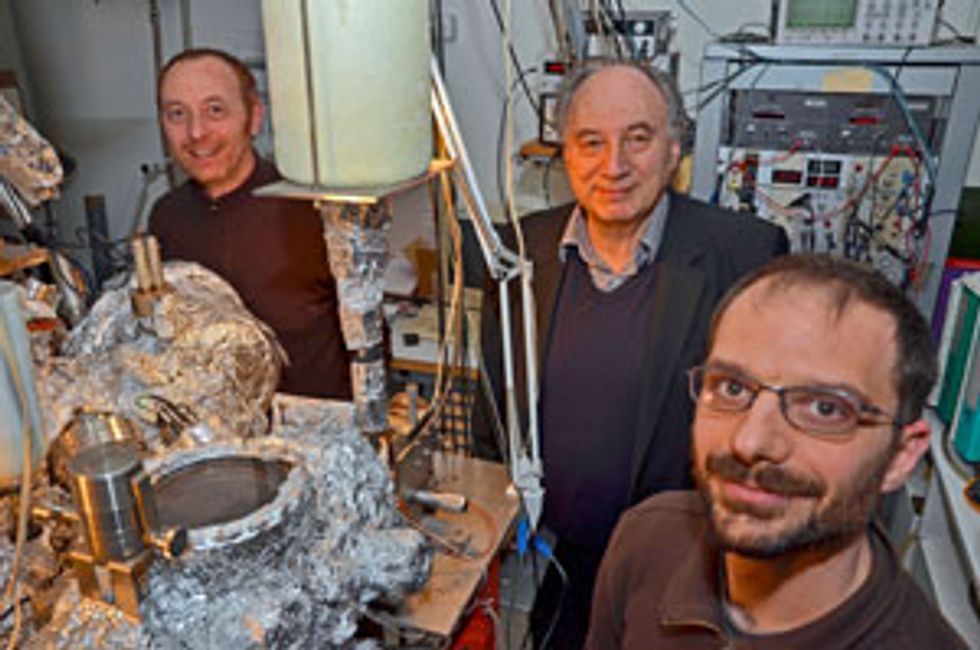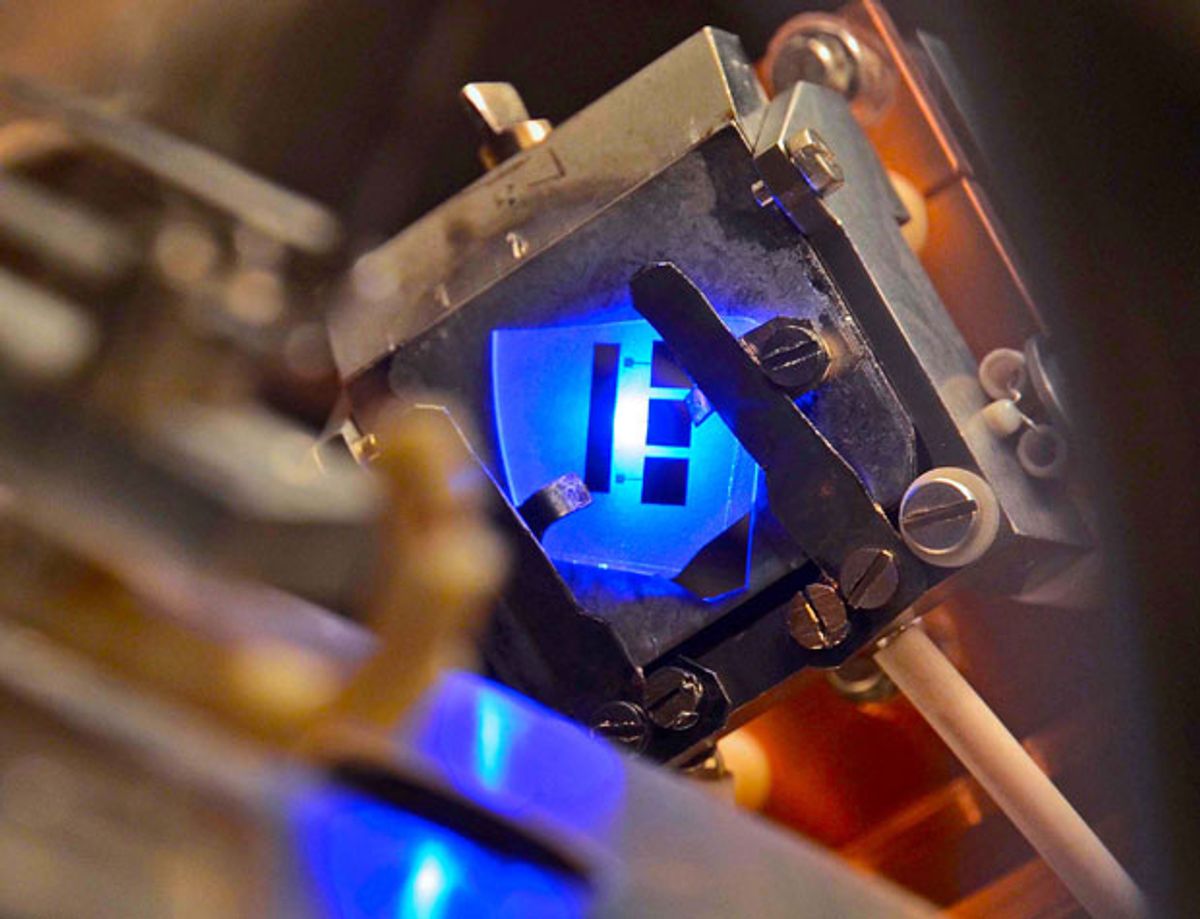
A divisive debate concerning the origin of the biggest flaw in the LED is now over, according to researchers from the University of California, Santa Barbara, and the École Polytechnique, in France. This team claims that it has categorically identified the cause of “droop,” a mysterious malady that leads an LED’s efficiency to decline as the current that passes through it is increased.
“In the experiment we do, there is a direct measurement of high-energy electrons, and the only source of [these] electrons is the Auger effect,” explains team member Claude Weisbuch, who argues that previous work identifying Auger as the cause of droop was just circumstantial. Auger recombination—an effect named after the 20th-century French physicist Pierre-Victor Auger—involves the interaction of an electron and a hole with another charge carrier, all without the emission of light.
The Auger effect occurs in LEDs when electrons and their positive counterparts—holes—are drawn together under an electric field and congregate in the so-called active region. Here, pairs of electrons and holes recombine to emit light. Auger effects also take place between two electrons and a hole to spawn a high-energy electron.
Weisbuch argues that the Auger effect is behind the high cost of the LED bulb: A 60-watt equivalent currently retails for more than US $10. As the current through an LED is increased, the Auger effect becomes stronger, meaning that there is a higher proportion of electron-hole interactions that don’t end in light emission. So to keep LED efficiency from slipping to the same level as that of compact fluorescents, manufacturers pack their bulbs with more chips that operate at lower currents. “Instead of being able to, in principle, generate a 75-W equivalent output with a 1-square-millimeter chip, you are obliged to use 10 chips and drive them at 10 times less current,” explains Weisbuch.

He hopes that a proven cause of droop will spur LED makers to design droop-combating chips that can run efficiently at far higher currents. LEDs account for about half the cost of the bulb, so slashing expenditures on this component will drive down the cost of solid-state lighting.
To pinpoint Auger as the cause of droop, the researchers modified the surface of an LED with caesium atoms. As a result, when they placed their chip in a vacuum, electrons that passed through the LED’s active region without generating light were ejected from the device. Using a spectrometer, the team was then able to simultaneously measure the energy of the electrons emitted from the LED and the light output from it.
“What convinces us that Auger is the major contribution to droop is that those electrons start to appear exactly at the time we see a drop in the luminescence efficiency,” says Weisbuch.
Rival groups are full of admiration for this elegant experiment. “Committing resources to do what must be nontrivial measurement and analysis is a nice show of leadership,” says theorist Weng Chow of Sandia National Laboratories, in Albuquerque. However, he believes that the results do not provide unambiguous proof that Auger is the cause of droop, and he is not alone in holding that view.
For example, Enrico Bellotti, associate professor of electrical and computer engineering at Boston University, argues that these experiments instead suggest that electron leakage is the cause of droop, with some help from the Auger effect.
Weisbuch admits that this might be true. He points out, however, that because the primary cause of this leakage is an Auger effect, this suggestion does not undermine his team’s findings.
Another critic, Fred Schubert from Rensselaer Polytechnic Institute, in Troy, N.Y., says that some of the electrons detected in the experiment might not be associated with the Auger effect at all, having simply leaked out of the LED’s quantum well.
“Auger recombination as a major contributor to the efficiency droop is not tenable,” argues Schubert. He claims that the Auger effect is not strong enough to cause droop. Droop is more prevalent at low temperatures, he points out, while Auger effects are weaker under these conditions, and it is not possible to accurately fit LED experimental data from various groups to the most well-known model for describing Auger recombination.
So in Schubert’s mind—and in the minds of many other researchers—the debate on LED droop is not over.
About the Author
Based in the United Kingdom, Richard Stevenson writes about compound semiconductors. He’s been explaining LED droop to IEEE Spectrumreaders since August 2009.
Contributing Editor Richard Stevenson specializes in the reporting of advances in compound semiconductor devices, such as LEDs, lasers, high-efficiency solar cells and next-generation power electronics. In the early 2000s he gained valuable experience in the compound semiconductor industry, working as a process engineer for IQE. During a three-year stint at this company he oversaw the growth and characterization of a vast range of thin films of compound semiconductor materials. In 2005 he changed tack, embarking on a career in journalism. He began with the role of Features Editor of Compound Semiconductor magazine, and took over as the Editor of this publication in 2009. Stevenson holds a Ph.D. in optolectronics from the University of Cambridge, and a Master of Physics degree from the University of Southampton.



